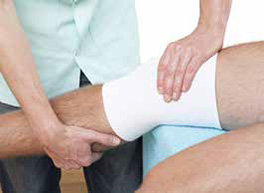
If you have a total knee replacement in your future, you may have heard about a procedure that retains the anterior cruciate ligament (ACL), also known as an ACL-sparing knee replacement. The popularity of this surgery continues to increase, especially among younger patients. But is an ACL-sparing knee replacement worth it?
First, you need to understand why some physicians believe the ACL should be “spared.” In the past, total knee replacement (commonly performed due to arthritis or injury to the knee that cannot be fixed by nonsurgical means) required the removal of the ACL, even if it was completely healthy. This was due to the design of replacement knees. When new implants came on the market that allowed surgeons to keep the ACL intact, many hoped they would lead to a more normal movement and thus better outcomes.
Because little long-term research is available, the jury is still out on ACL-sparing knee replacement. Some evidence shows no difference in patient-reported knee function with the newer implant, while other reports show superior patient satisfaction with the “feel” of the new knee. Advocates of the ACL-retaining procedure claim that it leaves the knee feeling more natural and allows for better control, better movement and better stability. For active patients who hope to continue activities requiring twisting, bending and sudden stops (such as tennis, golf and skiing), this can be a significant benefit.
No matter what type of knee replacement you and your physician choose, physical therapy will be an integral part of your recovery and long-term knee health. On the same day that you undergo surgery, you will likely startactive and passive range-of-motion exercises that will continue through your hospital stay and at home. Some surgeons may have us use a continuous passive motion (CPM) machine, hoping it may assist in your return to an enhanced comfortable motion pattern after surgery.
Working with your physician, we will design a rehabilitation program that maximizes the potential of your new knee. Your physical therapy regimen will help you achieve better results, with increased range of motion, less pain,and an easier recovery through proper strengthening and functional work—whether or not you still have your ACL.
